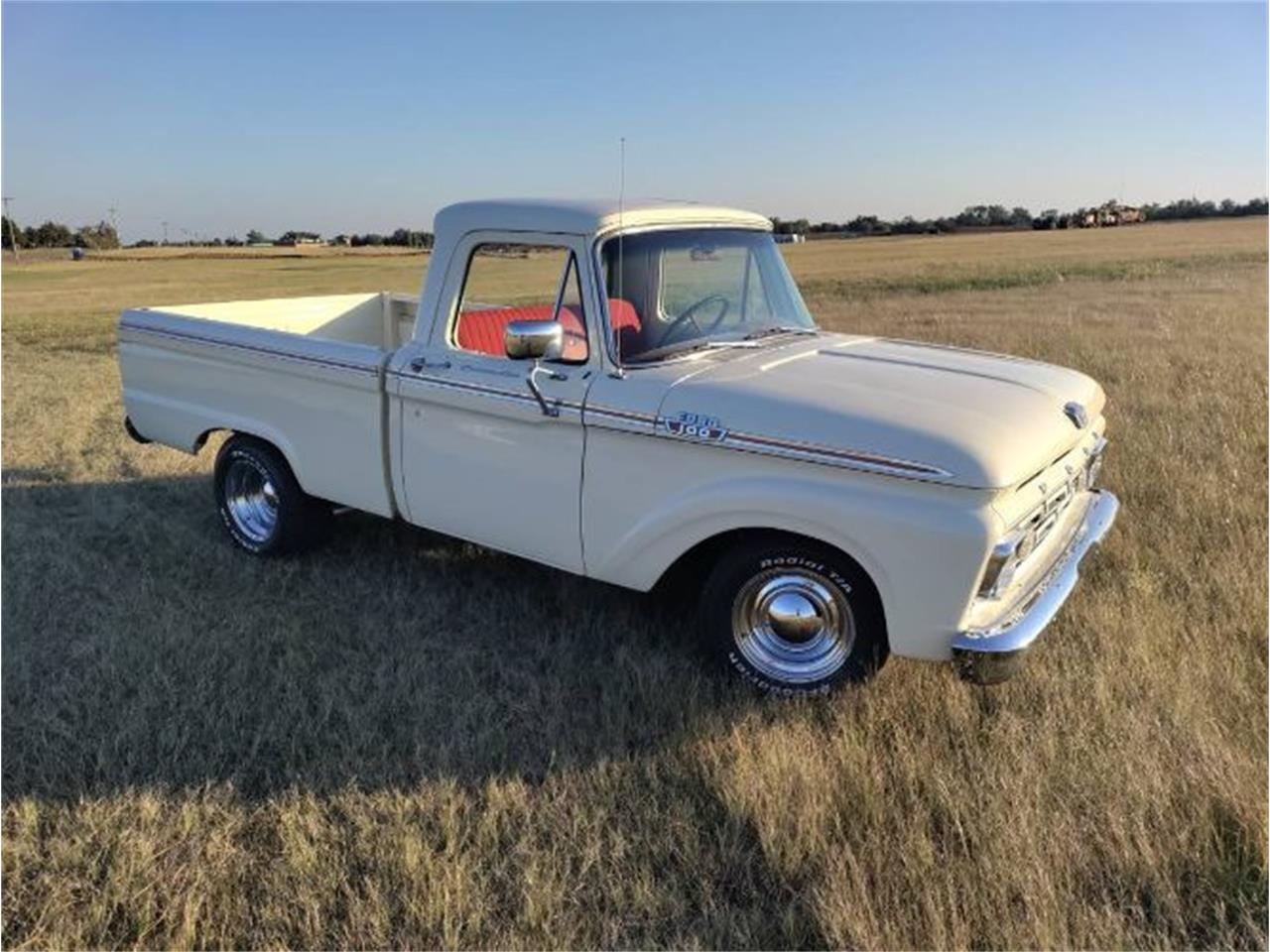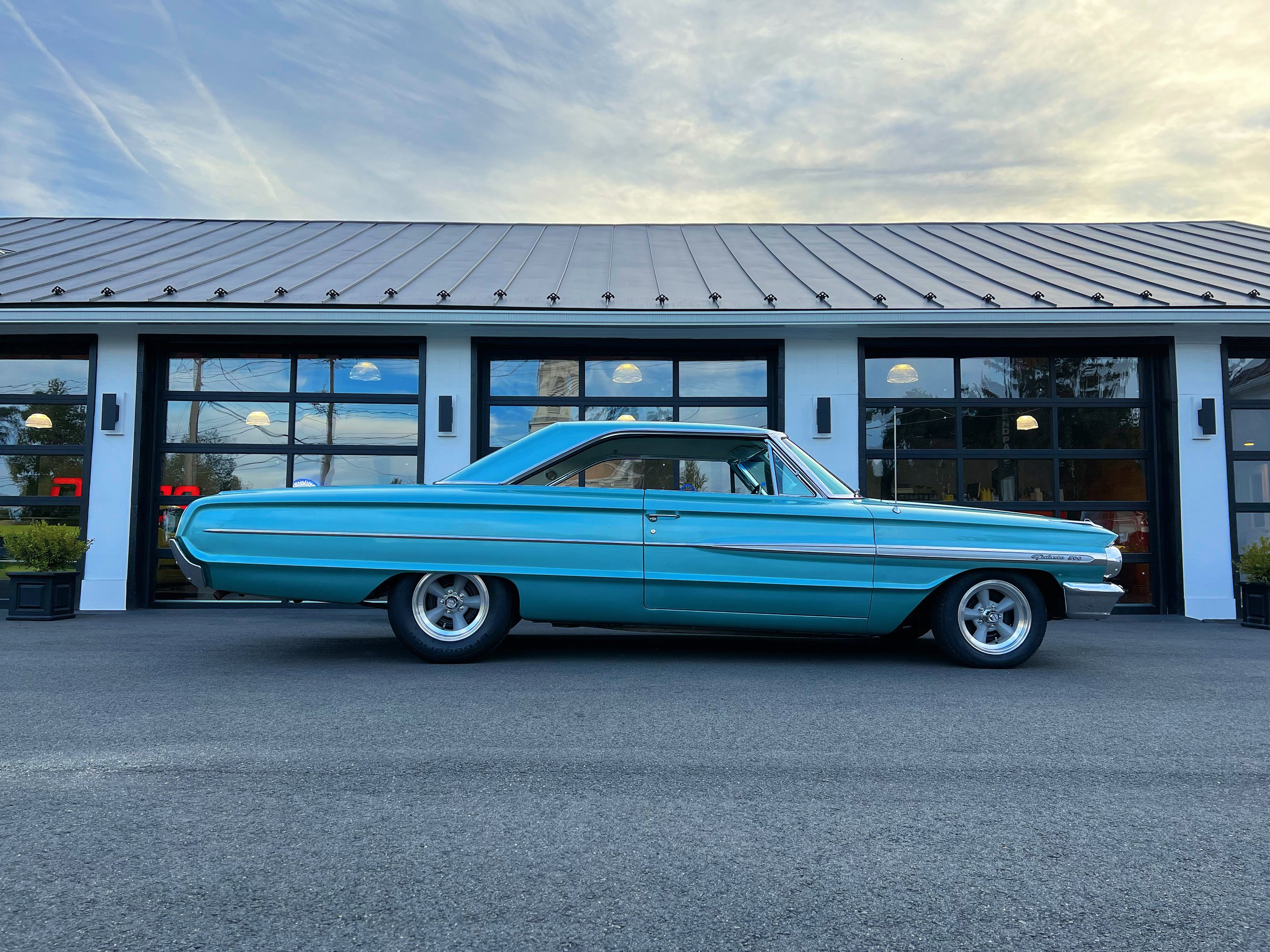1964 Ford Trucks For Sale: A Timeless Classic on the Market pickup.truckstrend.com
In the vast landscape of classic automobiles, few vehicles command the same nostalgic reverence and practical appeal as the 1964 Ford truck. More than just a utilitarian workhorse, the ’64 Ford F-Series embodies an era of American ingenuity, rugged simplicity, and enduring design. For enthusiasts, collectors, and those simply seeking a unique piece of automotive history, the phrase "1964 Ford Trucks For Sale" signals an opportunity to own a legend. These trucks offer a blend of vintage charm, robust construction, and surprising versatility, making them a highly sought-after commodity in today’s classic vehicle market. Whether you envision a meticulously restored showstopper, a reliable daily driver with character, or a blank canvas for a custom build, understanding what makes these trucks special and how to navigate the buying process is key to acquiring your perfect piece of Ford heritage.
The Enduring Appeal of the 1964 Ford Truck
1964 Ford Trucks For Sale: A Timeless Classic on the Market
The 1964 Ford F-Series is a significant part of the fourth generation (1961-1966) of Ford’s iconic pickup line. While the "unibody" design of the early 1960s was discontinued after 1963, the 1964 model year reverted to a more conventional separate cab and bed configuration, solidifying its classic truck aesthetic. This return to a tried-and-true design, combined with its sturdy construction, is a major factor in its enduring popularity.
Key elements that define the 1964 Ford truck’s appeal include:
- Classic Styling: With its clean lines, distinctive grille, and choice of Styleside (flat-sided) or Flareside (fendered) beds, the ’64 model boasts a timeless design that appeals to a wide audience.
- Robust Engineering: These trucks were built to last, featuring heavy-duty frames and simple, dependable mechanicals. This inherent durability means many original examples are still on the road today, often with minimal major repairs.
- Mechanical Simplicity: Unlike modern vehicles laden with complex electronics, the 1964 Ford truck is relatively straightforward to work on. This accessibility makes it an attractive option for DIY enthusiasts and those who appreciate mechanical transparency.
- Versatility: From farm work to family hauling, these trucks were designed for a variety of tasks. Today, they serve as everything from show vehicles and weekend cruisers to practical utility trucks and highly customized street rods.

Understanding the 1964 Ford Truck Lineup
To effectively search for a 1964 Ford truck, it’s essential to understand the different models and configurations available:
- F-100: The half-ton pickup, by far the most common and popular model. It offers a good balance of size, capability, and classic appeal.
- F-250: The three-quarter-ton, a heavier-duty option for more demanding hauling or towing. Often found with larger engines and beefier suspension.
- F-350: The one-ton dually (though single-rear-wheel versions were also common), designed for serious commercial or agricultural work. These are less frequently seen as restored classics.

Beyond the weight classes, buyers should consider:
- Bed Styles:
- Styleside: The integrated, smooth-sided bed, which became the standard.
- Flareside: The classic step-side bed with exposed rear fenders, a popular choice for its traditional pickup truck look.
- Engine Options:
- Inline-Six: The 223 cu in "Mileage Maker" and the larger 262 cu in were standard, known for their reliability and fuel efficiency (for the era).
- V8: The 292 cu in Y-block V8 was the primary V8 option, offering more power. Many trucks today may have undergone engine swaps to more modern Ford small-blocks (like the 302 or 351W) for improved performance and parts availability.
- Transmissions: Manual three-speed and four-speed transmissions were common, as were Ford-O-Matic and Cruise-O-Matic automatic transmissions.
- Drivetrain: Most 1964 F-Series trucks were 2-wheel drive (2WD). While 4-wheel drive (4WD) conversions exist, factory 4x4s were less common, primarily found in F-250 and F-350 models.
What to Look For When Buying a 1964 Ford Truck
Acquiring a classic truck requires a keen eye and a methodical approach. Here’s a guide to essential inspection points:
- Rust: This is the primary enemy of vintage vehicles. Thoroughly inspect:
- Cab: Floor pans, cab corners, rocker panels, cowl, and around the windshield/rear window.
- Bed: Bed floor, inner and outer fender wells (especially on Flaresides), and tailgate.
- Frame: Critical for structural integrity. Check for cracks, previous repairs, and significant surface rust that indicates deep corrosion.
- Engine and Drivetrain:
- Listen for unusual noises (knocks, rattles, excessive lifter noise).
- Check for leaks (oil, coolant, transmission fluid).
- Observe exhaust smoke (blue for oil, white for coolant, black for rich fuel mixture).
- Test the transmission through all gears (if applicable).
- If possible, check compression for engine health.
- Brakes and Steering: Test pedal feel and stopping power. Check for play in the steering wheel and responsiveness. Inspect brake lines for corrosion.
- Electrical System: Ensure all lights, gauges, wipers, and the heater/defroster work. Old wiring can be a fire hazard, so look for frayed or cracked insulation.
- Suspension and Tires: Check for worn bushings, shocks, and springs. Inspect tire condition and age.
- Interior: Assess the condition of the seat, dash pad, gauges, door panels, and headliner. Missing or damaged interior components can add significantly to restoration costs.
- Documentation: A clear title is paramount. Any service records or history can add value and provide insight into the truck’s past.
Navigating the Market: Where to Find 1964 Ford Trucks For Sale
The digital age has made finding classic vehicles easier than ever. Here are common avenues:
- Online Marketplaces:
- Classic Car Specific Sites: Hemmings, ClassicCars.com, Bring a Trailer (for higher-end examples).
- General Classifieds: eBay Motors, Craigslist, Facebook Marketplace. Be cautious and verify sellers.
- Specialty Forums & Groups: Dedicated 1964 Ford truck or F-Series enthusiast forums often have "for sale" sections where you can connect directly with owners.
- Specialty Dealerships & Restorers: Many classic car dealers specialize in trucks. While prices might be higher, you often get a vetted vehicle and potentially a warranty.
- Auctions: Major auctions like Mecum or Barrett-Jackson occasionally feature well-restored or customized 1964 Fords, though more commonly you’ll find them at local or online collector car auctions.
- Word of Mouth & Local Shows: Sometimes the best deals are found through networking at car shows or via local classifieds.
When searching online, use specific keywords like "1964 Ford F-100," "1964 Ford pickup," "1964 Ford truck," or "Flareside 1964 Ford." Be prepared to travel for the right vehicle.
Practical Advice and Actionable Insights
- Set a Realistic Budget: Beyond the purchase price, factor in transportation, registration, insurance, and crucially, potential restoration or repair costs. A "cheap" truck can quickly become expensive.
- Prioritize a Solid Foundation: A rust-free frame and a relatively straight body are far more valuable than a shiny paint job over hidden issues. Mechanical components are generally easier and less costly to replace than extensive bodywork.
- Get a Pre-Purchase Inspection (PPI): If you’re not an expert, hire a trusted mechanic specializing in vintage vehicles to inspect the truck thoroughly before you commit.
- Join the Community: Engage with 1964 Ford truck forums and clubs (e.g., Ford-Trucks.com, F-100 Builder’s Guide). These communities offer invaluable advice, resources, and connections for parts and expertise.
- Understand the Condition Scale: Be honest about what you’re buying. A "project" means significant work, a "driver" means it’s roadworthy but needs attention, a "good condition" means minor flaws, and "show quality" implies near perfection.
- Plan for Upgrades: While classic, many owners choose to upgrade brakes (to disc), steering (to power), and sometimes engines for better modern driving dynamics and safety. Factor these potential costs into your budget.
Estimated Price Guide for 1964 Ford Trucks For Sale
The price of a 1964 Ford truck varies significantly based on condition, model (F-100 being most sought-after), originality, engine, and location. The following table provides a general range:
| Condition Category | F-100 (2WD) Price Range | F-250/F-350 (2WD/4WD) Price Range | Description |
|---|---|---|---|
| Project/Parts Truck | $2,000 – $6,000 | $1,500 – $5,000 | Needs extensive work, potentially missing parts, significant rust, non-running. For a full restoration or parts donor. |
| Driver Quality | $7,000 – $15,000 | $6,000 – $12,000 | Runs and drives, roadworthy, but has noticeable flaws (dents, faded paint, interior wear, minor mechanical issues). Can be enjoyed immediately with some TLC. |
| Good Condition | $16,000 – $25,000 | $13,000 – $20,000 | Solid, presentable, mostly rust-free. May have an older restoration or well-preserved original paint. All major systems functional. |
| Show Quality | $25,000 – $50,000+ | $20,000 – $40,000+ | Meticulously restored, near-flawless paint and interior, rebuilt engine/drivetrain, high attention to detail. Could be original or tastefully customized. Prices can go significantly higher for top-tier builds or rare configurations. |
Note: These are estimated ranges and can fluctuate based on market demand, specific features (e.g., V8 vs. I6, specific bed type), and regional pricing.
Frequently Asked Questions (FAQ) about 1964 Ford Trucks
Q: Are parts readily available for 1964 Ford trucks?
A: Yes, generally. Mechanical parts (engine, transmission, suspension components) are often interchangeable with other Ford models of the era or have readily available aftermarket reproductions. Body panels and interior trim can be more challenging but are increasingly reproduced by specialty vendors.
Q: What are the most common rust spots on a 1964 Ford truck?
A: Cab corners, floor pans, rocker panels, lower fenders, around the windshield and rear window, and the bed floor/sides (especially Flareside fenders) are typical rust areas. Always check the frame thoroughly.
Q: Can I daily drive a 1964 Ford truck?
A: With proper maintenance and potentially some modern upgrades (like disc brakes, power steering, or a more efficient engine), a 1964 Ford truck can certainly be a reliable daily driver. However, be prepared for less fuel efficiency, slower acceleration, and different handling characteristics compared to modern vehicles.
Q: Which engine is considered "best" for a 1964 Ford truck?
A: This depends on your priorities. The original inline-six engines are known for their bulletproof reliability and decent fuel economy. The 292 Y-block V8 offers more power. Many owners opt for modern Ford small-block V8 swaps (like a 302 or 351W) for a balance of power, parts availability, and modern performance.
Q: Is a 1964 Ford truck a good investment?
A: While no classic car guarantees a financial return, well-maintained or properly restored 1964 Ford F-Series trucks have shown steady appreciation in value over time. Their classic appeal and relative simplicity ensure continued demand. The best "return" is often the enjoyment of owning and driving a piece of history.
Q: What’s the difference between a Styleside and a Flareside bed?
A: A Styleside bed is smooth-sided, with integrated rear fenders, creating a more modern, continuous body line. A Flareside bed features exposed, separate rear fenders and often a step in front of the rear wheels, giving it a more traditional, utilitarian "step-side" look.
Q: Are 4×4 versions of the 1964 Ford F-100 common?
A: Factory 4×4 F-100s were very rare in 1964. Most 4×4 trucks were F-250 or F-350 models. If you find a 4×4 F-100 from this year, it’s likely a custom conversion or a very rare original.
Conclusion
The allure of "1964 Ford Trucks For Sale" extends far beyond mere transportation; it’s about acquiring a piece of American heritage. These trucks represent a bygone era of straightforward engineering and enduring design, offering a unique and rewarding ownership experience. Whether you’re a seasoned collector or a first-time classic car buyer, careful research, thorough inspection, and a clear understanding of your goals will guide you to the perfect 1964 Ford truck. With its rugged charm and undeniable character, a ’64 Ford isn’t just a vehicle; it’s a statement, a project, and a timeless companion on the open road.

